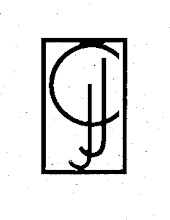
These weren’t guide dogs. They were ANCIENT dogs in harnesses designed for people to assist them in walking. The cinnamon pooch was a Husky who had decided to stop for an indeterminate length of time while he gazed at who knows what. His coat was no longer Husky full; it was short and shot out in different directions. Both dogs were frail and I wondered how long they’d been “walking” and how much farther they had to go.
Memories of our own ancient pooch flooded through my mind—just as they did while I read Merle’s Door: Lessons from a Freethinking Dog. Anyone who lives with a dog, especially an elderly or sick one, should read this book.
If you just want to enjoy a good story about a pooch, Merle’s Door delivers. Merle is one smart dog—and a tremendous clown (I laughed out loud on numerous occasions). But author Ted Kerasote also provides insights into canine behavior that every dog guardian should know, plus research and history on the subject. The book includes notes on publications cited and an index. Kerasote is wondrously thorough.
Toward the end of the book is an excerpt from veterinarian Bernard S. Hershhorn’s Active Years for Your Aging Dog. It’s a list of criteria dog guardians should consider before choosing to euthanize their companions. First, Hershhorn emphasizes, “Chronological age, in itself, is never one of them!”
Here’s the list (please share it with folks who might need it):
1. Is the condition prolonged, recurring, or getting worse?
2. Is the condition no longer responding to therapy?
3. Is your dog in pain or otherwise physically suffering?
4. Is it no longer possible to alleviate that pain or suffering?
5. If your dog should recover, is he likely to be chronically ill, an invalid, or unable to care for himself as a healthy dog?
6. If your dog recovers, is he likely no longer to be able to enjoy life, or will he have severe personality changes?
If your answer to all six questions is Yes, your dog should be euthanized. If your answers to questions 3 and 4 are No, you might want to let your dog die naturally. But first, you should consider these final questions:
1. Can you provide the necessary care?
2. Will such care so interfere with your own life as to create serious problems with you or your family?
3. Will the cost involved become unbearably expensive?
Sometimes a decision to cut a dog’s life short is based on the guardian’s reaction to the dog’s condition (e.g., unsightly tumors, deformities, etc.). But Hershhorn and, by example, Kerasote help us learn to examine the situation first through a dog’s perspective and needs.
Every dog deserves a peaceful and loving ending.
[Pic from Dogblog.]


